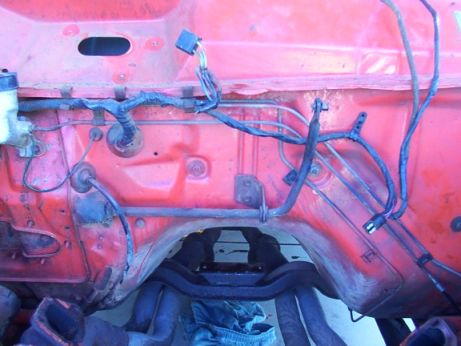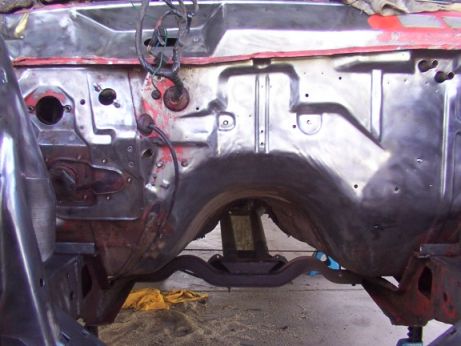|
|
|
This is the bulkhead stripped of components and paint. The gearbox crossmember is seen through the opening, with the two humps for the twin exhaust pipe clearance. From the left, the large hole is for the brakes and underneath it is the flexible joint for the steering column shaft. The smaller circular hole alongside with the two studs is for the clutch cylinder. To its right and lower down is the grommet and cable for the handbrake and below it the hole for the accelerator linkage shaft. The main wiring loom is obvious, and over to the right the two copper pipes are from the heater matrix. Note the stress crinkles inherent in the stamping process of the bulkhead. |
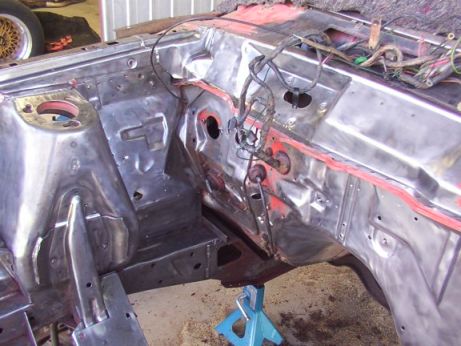 |
|
Another view of the bulkhead and inner wing. Note the oval hole for the wiper motor and the loom stuffed into the plenum chamber for the heater. The lower edge of this chamber follows the seam still painted red, and if the drainage holes get blocked this plenum holds water and rots. This is a notorious rust area in the Falcons and is difficult to repair without resorting to a major strip down. A common result of this rust is water leaking into the interior footwells. |
 |
|
This is the left hand side of the engine bay showing the suspension tower. The spring acts on the underside of the top of the tower and the shock absorber mount bolts through the three slotted holes in the top. Note the elaborate bracing of the tower as it runs down to the engine crossmember, and the ribs stamped into the inner wings. The triangular shape bisecting the ribs is the mounting point for the battery plate. Also note the large U-shaped brace and suspension mounting point running forward to the lower radiator support. |
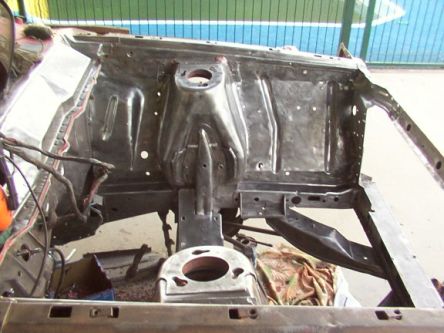 |
|||
|
The right hand side of the engine bay. |
|||
|
And what does it look like when it is all put back together ? |
|||
 |
|||
|
Note the new accelerator linkage arm and, to the right and left and crossing behind the engine crossmember, the power steering hoses. New engine mounts and brake and clutch pipes are also seen. |
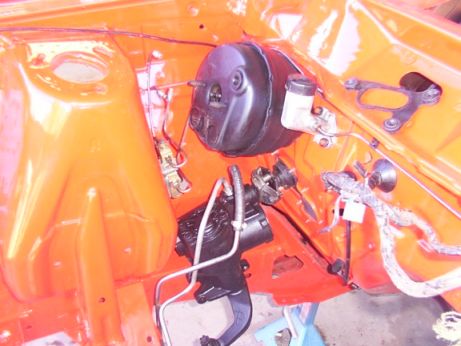 |
||||
|
The steering box with power pipes attached and flexible joint seen immediately below the brake booster. Note the brake proportioning valve attached to the suspension tower. The brakes pipes for rear drums and passenger side disk cross the car underneath the seam of the heater plenum, and the rubber isolation mount for the wipermotor can also be seen at top left, although not exactly in place. |
||||
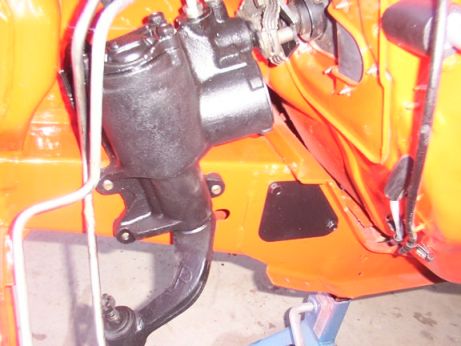 |
||||
|
Close up of the steering box and flexible coupling. To the right, note the speedometer and handbrake cables passing through the bulkhead and downwards, and at top right, the rubber bush and grommet for the accelerator linkage arm. The arm was necessary as initially most engines and carburetors were U.S. sourced, and as such had their throttle linkage set up for left hand drive, requiring the arm to cross behind the engine to compensate for rhd. |
||||
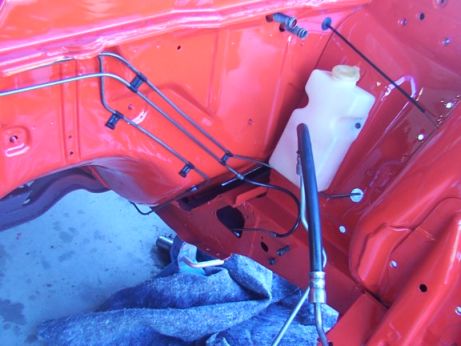 |
||||
|
The three hydraulic pipes pass downward. The top pipe passes through the inner wing to supply the passenger brake disk, the middle pipe joins the black flexible pipe and operates the clutch slave cylinder and the bottom pipe passes down and to the rear brakes. The two heater pipes are seen at the top, and the windscreen washer bottle is below. We will return to this later. |
||||
 |
||||
|
Another view of the drivers side with master cylinder, shock absorber mount and wiper motor in place. Note the windscreen washer pump integrated with the wiper gearbox, with single inlet from bottle and twin outlets to the jets. |
|
What lies outboard of the inner wings ? |
||||||||||||||||||
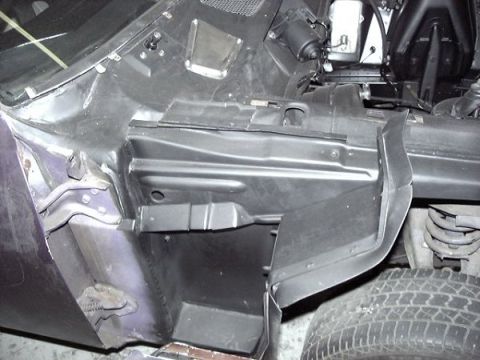 |
||||||||||||||||||
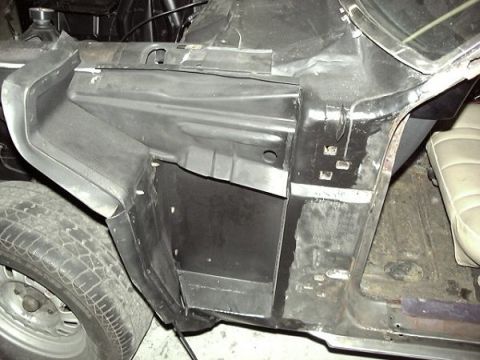 |
||||||||||||||||||
|
Here is a similar view of a John Goss Special Falcon semi stripped for restoration. |
||||||||||||||||||
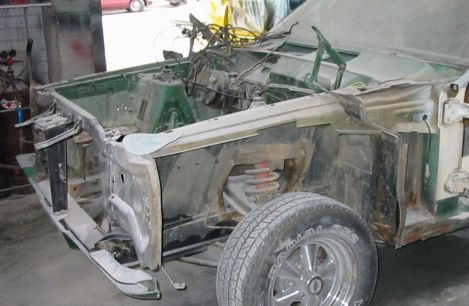 |
||||||||||||||||||
|
As the JGS was based on the XB model, note at the lower left of the picture the front valance panel has the mounting slot for the front sidelight and indicator assembly which was mounted below the bumper on the XB only. Also unique to the XB, notice the two long support brackets sticking out to the front of the car on either side of the vertical panel on the radiator support. These were to brace the plastic grille and were longer on the XB than the XA, reflecting the greater distance from grille to support. |
||||||||||||||||||
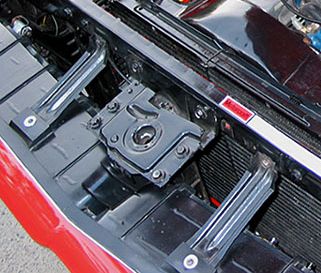 |
||||||||||||||||||
|
XB grille braces |
||||||||||||||||||
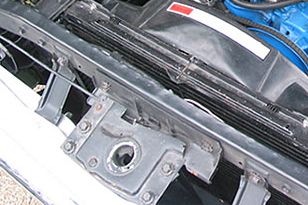 |
||||||||||||||||||
|
XA grille braces |
||||||||||||||||||
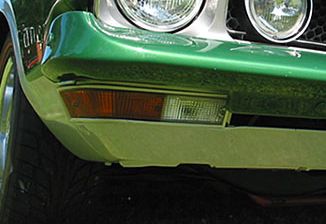 |
||||||||||||||||||
|
XB indicator/sidelight assembly mounted below the bumper on the valance. |
|
We mentioned the washer bottle earlier, so let’s take a look at its location. |
||||||||||||||||||||||||||
 |
||||||||||||||||||||||||||
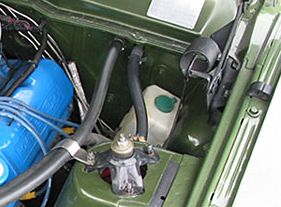 |
||||||||||||||||||||||||||
|
As seen before on XA’s, the washer bottle is located below the passenger side bonnet hinge. |
||||||||||||||||||||||||||
|
As it is on early XB’s. |
||||||||||||||||||||||||||
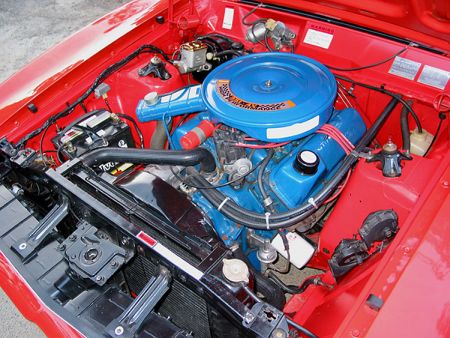 |
||||||||||||||||||||||||||
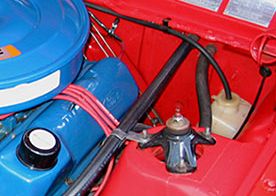 |
||||||||||||||||||||||||||
|
Whereas on later XB’s and XC’s it moved to the front of the driver’s side suspension tower. |
||||||||||||||||||||||||||
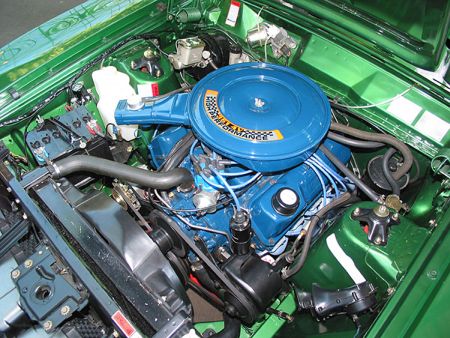 |
||||||||||||||||||||||||||
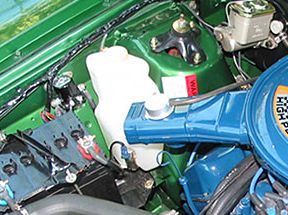 |
||||||||||||||||||||||||||
|
And the reason ? Well, the dread hand of emissions reached Australia too and they needed somewhere to put the charcoal canister. |
||||||||||||||||||||||||||
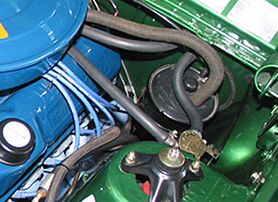 |
||||||||||||||||||||||||||
|
And how did the late washer bottle mount ? |
||||||||||||||||||||||||||
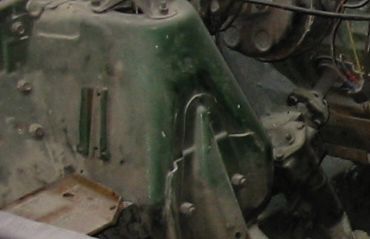 |
||||||||||||||||||||||||||
|
Two little brackets on what had been flat steel. |
||||||||||||||||||||||||||
|
But wait, that is not the end of the story, because late XC’s moved the bottle again, to what is known as the XD location to the front of the passenger side suspension tower. |
||||||||||||||||||||||||||
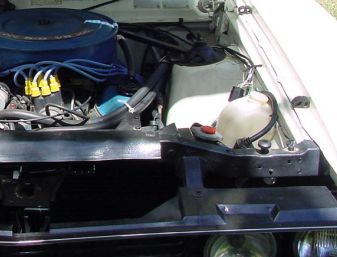 |
||||||||||||||||||||||||||
|
As seen on this Cobra. |
||||||||||||||||||||||||||
|
Why ? Please get in touch if you know. |
||||||||||||||||||||||||||
|
And, just to show what the 250ci straight six engine looked like under the bonnet of an XA Falcon, here it is. |
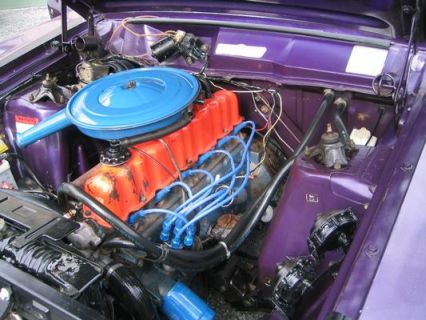 |
|
Landau specific bits |
|
As mentioned before, the Landau was a luxury model of the XA/XB hardtop, and borrowed several styling bits for the LTD four door. |
|
Most noticable, and with an effect on the structure of the coupe bodyshell, was the tail light panel. |
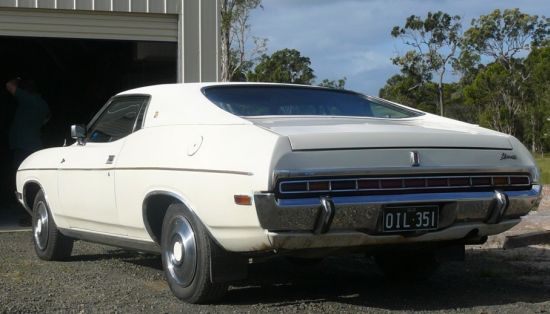 |
|
This used the narrow strip of lights on the Landau. |
|
Which was completely different from the ‘normal’ XA or XB hardtop panel. |
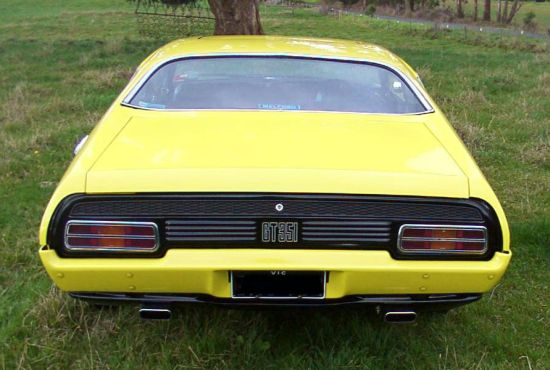 |
|
And hence required a completely different tail panel stamping. |
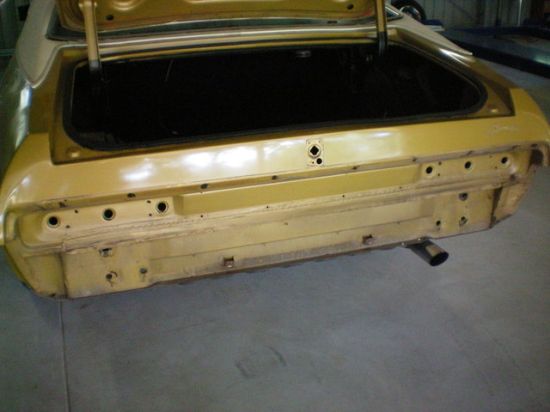 |
|
From that of the ‘normal’ hardtop. |
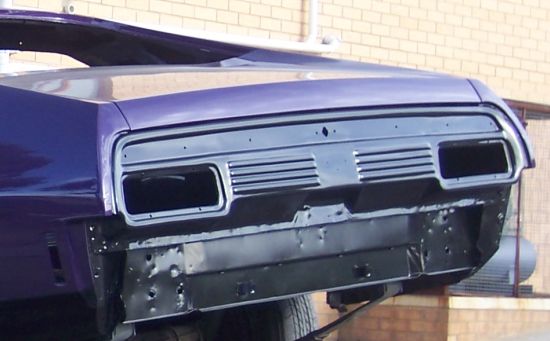 |
|
Notice also that the curved end caps to the rear wings are different in shape between the two bodyshells. |
|
The other obvious difference is the ‘shape’ of the rear quarter light openings, which on the Landau were squared off.. |
 |
|
Whereas, on the normal hardtop, the window was styled and sharply angled. |
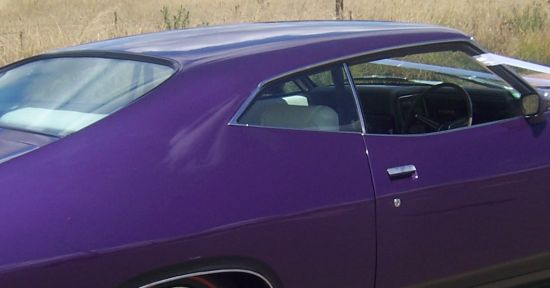 |
|
How this was achieved was quite inelegant, but hidden by the vinyl roof. |
 |
|
The quarter glass panel was the same, just a lot more was hidden behind the welded in panel. |
|
Back to contents |
|||
|
[Australian Ford Register UK] [History] [The Cars] [Members] [Bits and Pieces] [Contents] [Model Changes - Dashes] [Vinyl Roofs] [Doorhandles - Tail lamps - Glass] [Underneath] [Underneath 2] [Thorn Red] [Spoilers - Horn Cars] [Styling - Bonnets] [Grand Sports] [Metricification] [Grand Sport details - P5 LTD] [Scoops and vents] [Wheels] [The other XR8 - P6 LTD] [Superbird] [Compliance Plates] [Engines] [Engines2] [Rust] [Stampings] [Falcons] [Literature] [Some UK background] [One owner] [Bits and Pieces 2] [Untitled124] [Links] [Visitors] [Events] [AusCCA] [Site History] |

